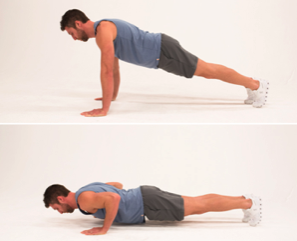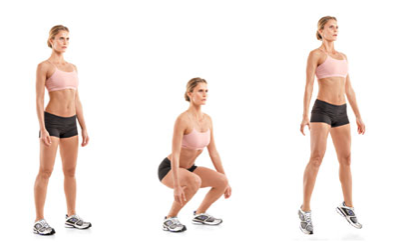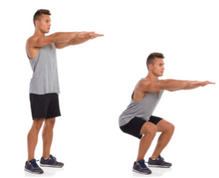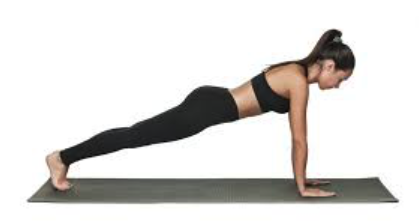Tips to Modify Your Home Workouts to Minimize Injury
- evddawix
- Dec 14, 2020
- 3 min read
Under the current circumstances, many people have resorted to doing at home workouts. Although this is a great alternative or addition to your workout routine, there can often be some undesirable side effects.
Injuries that we commonly see are shoulder impingement or tendinopathy for the upper body, and achilles or patellar tendinopathy in the lower body. These types of injuries can occur when we overload joints and surrounding tendons with forces that they aren't used to withstanding. If you significantly increase the load on your body too quickly it doesn’t allow time for muscular adaptations to occur which can result in injury or pain.
A very common example is plyometrics. These are often added into high intensity interval training (HIIT) exercise routines as a great way to get your heart rate up and increase challenge; however, it also significantly increases the load through your joints/tendons/muscles. A general rule of thumb is that plyometric exercises should only be completed 2-3x/week with 2-3 days rest in between sessions to allow for recovery.
Some tips for trying to minimize injury while completing a home workout program include:
1. Do a Good Warm Up!
Warming up primes your body to do the workout. If you have any impairments (ex. stiff ankle), doing a warm up will allow you to regain your full ankle range of motion prior to loading the joint. This will optimize both joint function and the way the muscles and tendons are loading so you won’t need to compensate and potentially cause further injuries.
Adding some activation exercises in to your warm up can also be a helpful tool. Using the stiff/sprained ankle example you might want to add in some banded ankle work, calf raises, or single leg balance to “wake up” the stabilizer muscles prior to adding more load and doing more challenging exercises.
2. Substitute Exercises
Doing group or pre-set exercise routines can often be difficult because not every person doing the routine will be at the same fitness level or have the same abilities. Knowing how to make modifications to exercises can be very helpful in adapting exercises to your current ability. If you are new to plyometric exercises you can adapt the program a few ways. I will use squat jumps as an example: complete 1 squat jump every 3-5 repetitions and regular squats for the remainder or alternate 1 set of squat jumps with 1 set of regular jumps.
Below are some common substitutions that can be used, listed from most challenging to least challenging:
Push ups from toes - push ups from knees - incline push ups
Squat jumps - Squats to toes (rise on to your toes rather than completing full jump) - Squat
Plank jacks - high plank - plank from knees
Double leg drop - single leg drop - heel touches
3. Do Regular Yoga/Stretching
Adding in a regular stretching or yoga routine 2-3x/week can be a great way to prevent injuries. Aim for 15-30 minute sessions (you can do longer if desired) and focus on areas that feel tight or restricted. Each session could be focused on a different area of the body, or you could do a full body stretch each time. Jayme Gordon graduated from the University of British Columbia with a Master's degree in Physical Therapy. Prior to this she completed a Bachelor's of Science Kinesiology degree at the University of Victoria. She is a member of the Canadian Physiotherapy Association as well as the Physiotherapy Association of BC. Jayme has a passion for working with a diverse patient population ranging from athletes to community dwelling seniors. Book with Jayme today.
.png)
























Comments